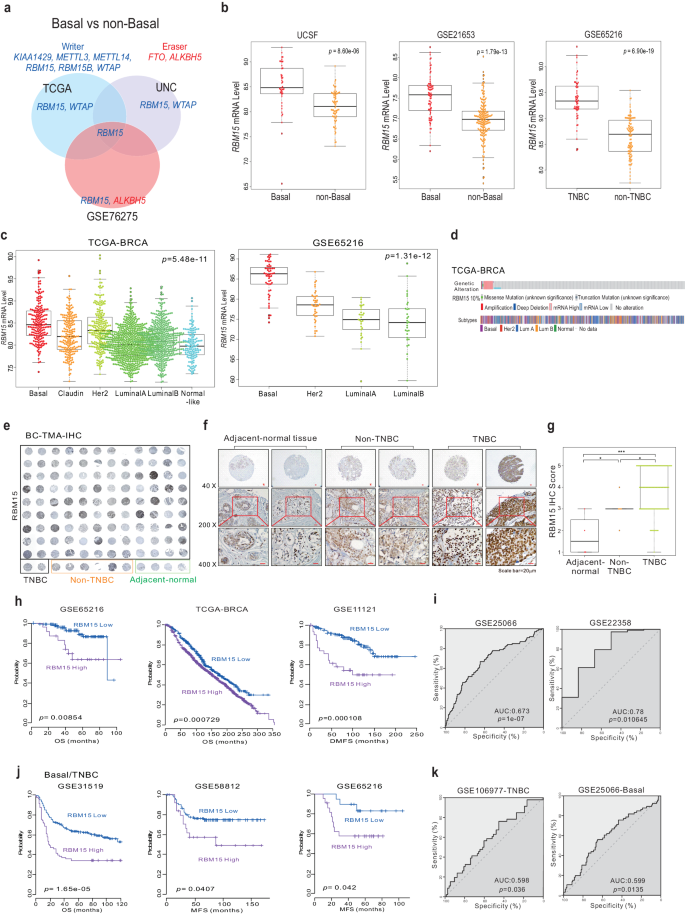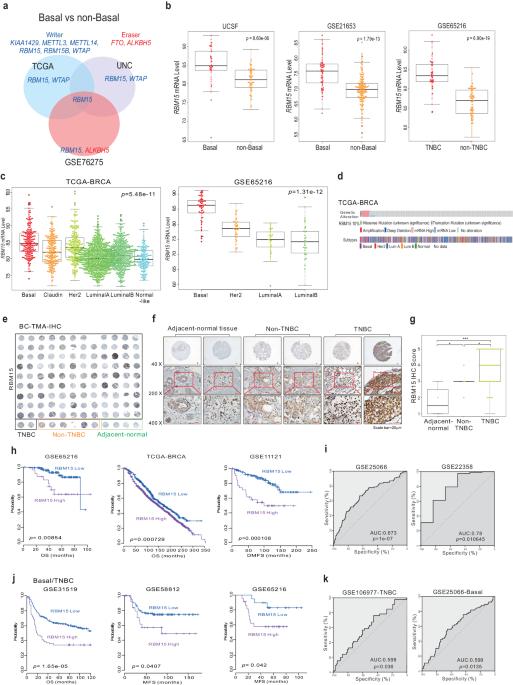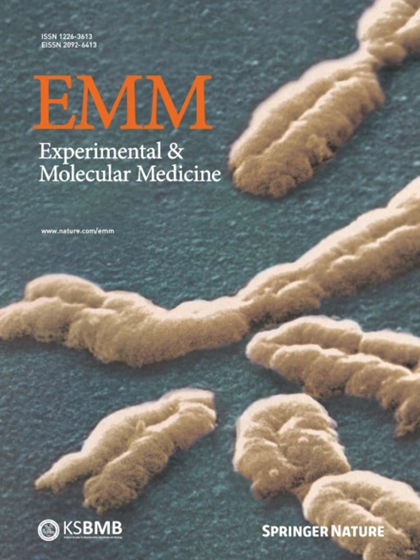m6A 作者 RBM15 通过刺激丝氨酸和甘氨酸的新陈代谢来驱动三阴性乳腺癌细胞的生长。
IF 9.5
2区 医学
Q1 BIOCHEMISTRY & MOLECULAR BIOLOGY
引用次数: 0
摘要
N6-腺苷甲基化(m6A)是控制癌细胞生长和肿瘤发生的关键。然而,m6A 甲基转移酶如何调节特定靶标上的 m6A 水平,其功能和详细机制仍然未知。在目前的研究中,我们发现与非基底样乳腺癌患者相比,基底样乳腺癌(BC)患者的 m6A 写入者 RBM15 水平明显升高,并且这种升高与较差的临床预后有关。基因表达谱分析显示了RBM15与丝氨酸和甘氨酸代谢基因(包括PHGDH、PSAT1、PSPH和SHMT2)之间的相关性。RBM15 通过直接与靶 RNA 结合影响 m6A 水平,特别是丝氨酸和甘氨酸代谢基因的 m6A 水平。RBM15 对细胞生长的影响主要取决于丝氨酸和甘氨酸代谢。因此,RBM15 通过改变丝氨酸和甘氨酸代谢来协调癌细胞生长,这表明 RBM15 是治疗 BC 的新靶点。本文章由计算机程序翻译,如有差异,请以英文原文为准。


The m6A writer RBM15 drives the growth of triple-negative breast cancer cells through the stimulation of serine and glycine metabolism
N6-adenosine methylation (m6A) is critical for controlling cancer cell growth and tumorigenesis. However, the function and detailed mechanism of how m6A methyltransferases modulate m6A levels on specific targets remain unknown. In the current study, we identified significantly elevated levels of RBM15, an m6A writer, in basal-like breast cancer (BC) patients compared to nonbasal-like BC patients and linked this increase to worse clinical outcomes. Gene expression profiling revealed correlations between RBM15 and serine and glycine metabolic genes, including PHGDH, PSAT1, PSPH, and SHMT2. RBM15 influences m6A levels and, specifically, the m6A levels of serine and glycine metabolic genes via direct binding to target RNA. The effects of RBM15 on cell growth were largely dependent on serine and glycine metabolism. Thus, RBM15 coordinates cancer cell growth through altered serine and glycine metabolism, suggesting that RBM15 is a new therapeutic target in BC. RNA methylation, a key process controlling gene activity, involves proteins like RNA-binding motif protein 15 (RBM15). Its role in breast cancer is unclear. Studies show RBM15 is highly active in a type of breast cancer called triple-negative and is linked to patient outcomes. It controls genes related to serine and glycine metabolism; substances that help cancer cells grow. The research demonstrates that RBM15 controls genes involved in the cancer metabolism of serine and glycine, two types of amino acids, which contributes to cancer cell proliferation. This suggests that targeting RBM15 can be new therapeutic approaches for triple-negative breast cancer patients. This summary was initially drafted using artificial intelligence, then revised and fact-checked by the author.
求助全文
通过发布文献求助,成功后即可免费获取论文全文。
去求助
来源期刊

Experimental and Molecular Medicine
医学-生化与分子生物学
CiteScore
19.50
自引率
0.80%
发文量
166
审稿时长
3 months
期刊介绍:
Experimental & Molecular Medicine (EMM) stands as Korea's pioneering biochemistry journal, established in 1964 and rejuvenated in 1996 as an Open Access, fully peer-reviewed international journal. Dedicated to advancing translational research and showcasing recent breakthroughs in the biomedical realm, EMM invites submissions encompassing genetic, molecular, and cellular studies of human physiology and diseases. Emphasizing the correlation between experimental and translational research and enhanced clinical benefits, the journal actively encourages contributions employing specific molecular tools. Welcoming studies that bridge basic discoveries with clinical relevance, alongside articles demonstrating clear in vivo significance and novelty, Experimental & Molecular Medicine proudly serves as an open-access, online-only repository of cutting-edge medical research.
 求助内容:
求助内容: 应助结果提醒方式:
应助结果提醒方式:


